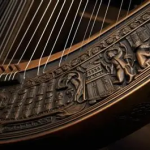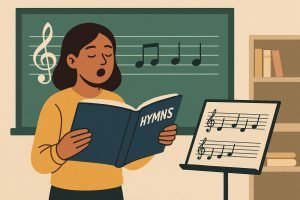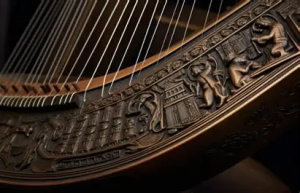The Renaissance was not only a rebirth of art, science, and culture—it was a time when music underwent profound transformation, especially within the church. The Reformation and the Catholic Counter-Reformation sparked a reevaluation of sacred music’s role, purpose, and accessibility. At the heart of this movement were two towering figures: Martin Luther and Giovanni Pierluigi da Palestrina. Though they stood on opposite sides of a religious divide, their impact on music was complementary, shaping its evolution toward clarity, expression, and engagement with the faithful.
Music Before the Reformation
Before delving into Luther and Palestrina’s contributions, it’s crucial to understand the context. In the early 16th century, sacred music in the Catholic Church was highly elaborate. Composers like Josquin des Prez created dense polyphonic works that, while artistically brilliant, often rendered the text unintelligible. The mass settings and motets of this time showcased the skill of the composer and choir, but they distanced the average worshiper from the meaning of the liturgy.
This tension between musical beauty and liturgical clarity would become a central issue in the upcoming religious reforms.
Martin Luther and the Protestant Reformation
Protestant Reformation | Music 101
Martin Luther, the German theologian who ignited the Protestant Reformation in 1517, was not only a reformer of doctrine but also a musician. A skilled lutenist and composer, Luther believed deeply in the power of music to teach and inspire. He once stated, “Next to the Word of God, the noble art of music is the greatest treasure in the world.”
Luther’s reforms emphasized congregational participation, which was a dramatic shift from the Catholic practice where choirs dominated church music. He translated Latin hymns into German and composed or adapted chorales—simple, tuneful pieces meant to be sung by the entire congregation. The most famous of these is “Ein feste Burg ist unser Gott” (“A Mighty Fortress Is Our God”), which became a rallying cry for Protestant communities.
By promoting vernacular language and accessible melodies, Luther democratized church music. He believed music should be a vehicle for faith, not a display of complexity. This approach also laid the foundation for what would later become the German chorale tradition, influencing composers like Bach and beyond.
The Catholic Response and the Council of Trent
In response to the Protestant Reformation, the Catholic Church launched the Counter-Reformation, a series of reforms meant to clarify doctrine and renew spiritual discipline. One major concern was the state of church music. During the Council of Trent (1545–1563), some members of the clergy criticized polyphonic music for obscuring sacred texts and failing to promote reverence. There were even discussions about banning polyphony altogether in favor of simpler, chant-based music.
Enter Giovanni Pierluigi da Palestrina.

Palestrina: Savior of Polyphony?
Palestrina, an Italian composer active in Rome, became a symbol of the Counter-Reformation’s musical ideals. Though not officially commissioned by the Council of Trent, his Missa Papae Marcelli (Pope Marcellus Mass) is often credited—perhaps mythically—with convincing the council fathers that polyphony could still serve the Church’s goals, provided it enhanced textual clarity and spiritual contemplation.
Palestrina’s style was marked by balanced counterpoint, smooth melodic lines, and careful attention to how the text could be understood by the listener. His sacred works achieved an ideal fusion of artistic complexity and liturgical intelligibility. In doing so, he preserved the use of polyphony in Catholic worship while reforming its excesses.
His music became the model for sacred composition well into the Baroque period, and his treatises and style were studied by generations of composers. For centuries, he was viewed as the archetype of sacred music, the “savior” of church polyphony—though modern scholarship has nuanced that narrative.
A Shared Legacy
Though Luther and Palestrina worked in different musical and theological worlds, their efforts share common ground. Both sought to realign music with its spiritual purpose. Luther did so by opening sacred music to the congregation and simplifying its forms; Palestrina did so by refining its complexity to better serve the text and the liturgy. Both preserved the dignity and beauty of sacred music while making it more spiritually effective.
In a way, the musical reformation of the Renaissance wasn’t about choosing between complexity and simplicity—it was about reclaiming music as a vehicle for worship, not just artistry. Through the work of Luther and Palestrina, sacred music found new paths forward, echoing through cathedrals and congregations across Europe and into the modern age.
—






More Stories
20 Fascinating Facts About Ludwig van Beethoven
20 Fascinating Facts About Giovanni da Palestrina: The Prince of Sacred Music
20 Fascinating Facts About Igor Stravinsky: A Revolutionary Composer of the 20th Century